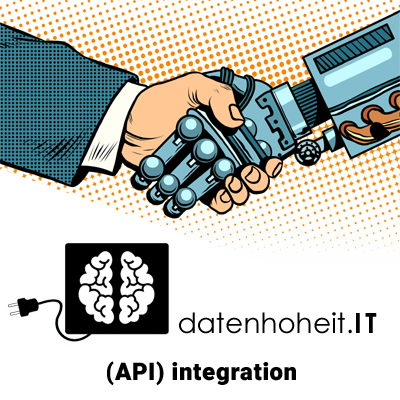What does (API) integration mean?

What does (API) integration mean?
API integration is the process by which applications and systems are connected using their application programming interfaces (APIs) to exchange data and functionality. This integration enables different software applications to function as a cohesive system, leading to automated data exchange, improved operational efficiency, and the creation of new applications.
How does API integration work?
Communication via APIs: APIs serve as standardized interfaces that allow developers to communicate with an application without knowing its internal workings.
Data and function exchange: Using these APIs, applications can request data, send information, and trigger processes in other systems.
Automated workflows: The exchange of data and functions can be automated, eliminating manual steps and improving coordination between systems.
Key features:
Communication: APIs are the backbone of modern software development, enabling the exchange of data and functionality between applications and services.
Standardization: They define a set of rules (protocols) that determine how requests should be made and data received, ensuring a smooth interaction.
Connectivity: They create connections between different systems and services, enabling them to work together seamlessly, often without the end user noticing.
Flexibility: By leveraging APIs, applications can access a wide variety of services and data without having to build the underlying systems themselves.
Benefits of API Integration
Increased Efficiency: The automated exchange of data and functions improves operational efficiency and eliminates manual work.
Improved Data Consistency: APIs ensure that data is synchronized across different platforms, increasing data consistency.
Scalability: The ability to seamlessly connect different systems makes companies more scalable.
Increased Flexibility: Companies can become more agile and better adapt to new business requirements.
Automation: The process can be used to automate business processes and increase productivity.
Examples of API Integration
Travel apps: Online travel search engines use APIs to retrieve flight data, hotel information, and other travel services from various providers and bundle them into a single application.
Finance: API integrations enable secure data exchange between banking systems and payment platforms for real-time transactions and financial management.
E-commerce: Platforms can use APIs to obtain product information from manufacturers and integrate it directly into their online stores.
CRM systems: New contact information entered into a CRM system can be automatically transferred to other marketing or sales platforms, which is made possible through API integration.
Do you need an integration or would you like to know which integration is effective for you? Simply contact us; our friendly support team will be happy to assist you.




